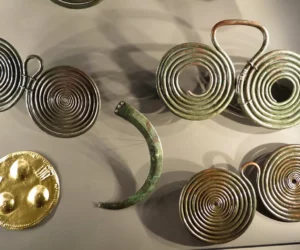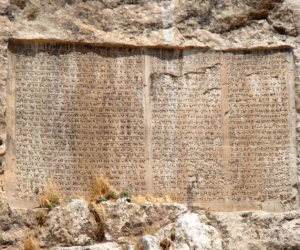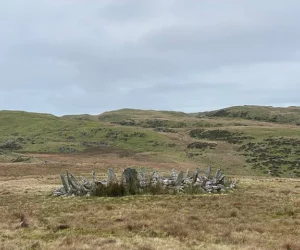Bryn Cader Faner is a Bronze Age burial cairn located in North Wales. The site dates back to around 2000 BC. It is one of the most well-preserved examples of prehistoric funerary architecture in Wales. The cairn stands on a small hill in Snowdonia, offering a panoramic view of the surrounding area. Structure and Design…

The Stollhof Hoard
In 1864, a shepherd boy stumbled upon a remarkable treasure on the slopes of the Hohe Wand mountains in Lower Austria. This discovery, known as the Stollhof Hoard, dates back to around 4000 BC, placing it firmly in the Copper Age. The hoard includes Austria’s earliest known gold objects, making it a significant find in…

The Balkåkra Ritual Object
The Balkåkra Ritual Object: Mystery from the Bronze Age The Balkåkra Ritual Object, unearthed in 1847 near Ystad, Sweden, remains an enigma. This ancient bronze artifact, dating back to roughly 1500–1300 BC, has left archaeologists guessing about its true purpose. Though some suggest it may have been a ritual item, its exact function is still…

The Zbruch Idol
The Zbruch Idol: A Glimpse into Pre-Christian Slavic Beliefs The Zbruch Idol, also known as Sviatovid, is a fascinating artifact from the 9th century. It’s a four-sided limestone sculpture thought to be one of the few remaining monuments of pre-Christian Slavic beliefs. However, debates about its true origin persist. Some scholars argue that it represents…

Assur
Assur, also known as Ashur, was an ancient city, religious capital, and the namesake of the Assyrian Empire. It is located on the western bank of the Tigris River in northern Mesopotamia, in modern-day Iraq. The city holds immense historical significance due to its role as a political and religious center over several millennia. Assur…

Xerxes I inscription at Van
The Xerxes I Inscription at Van: A Statement of Power and Legacy The Xerxes I inscription at Van, also known as the XV Achaemenid royal inscription, is a striking testament to the rule of King Xerxes I. Xerxes, who reigned from 486–465 BC, had this cuneiform inscription carved into a mountain near the Van Fortress,…

